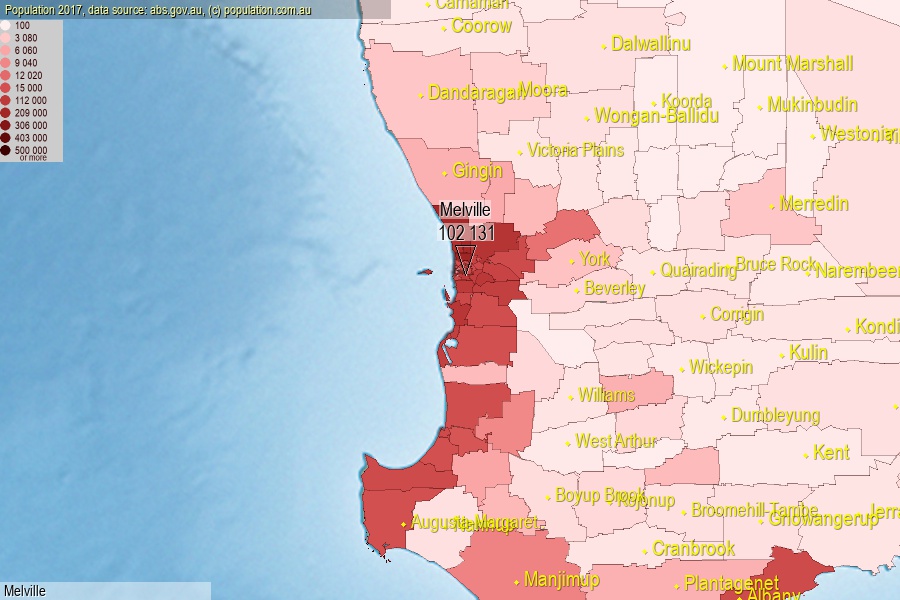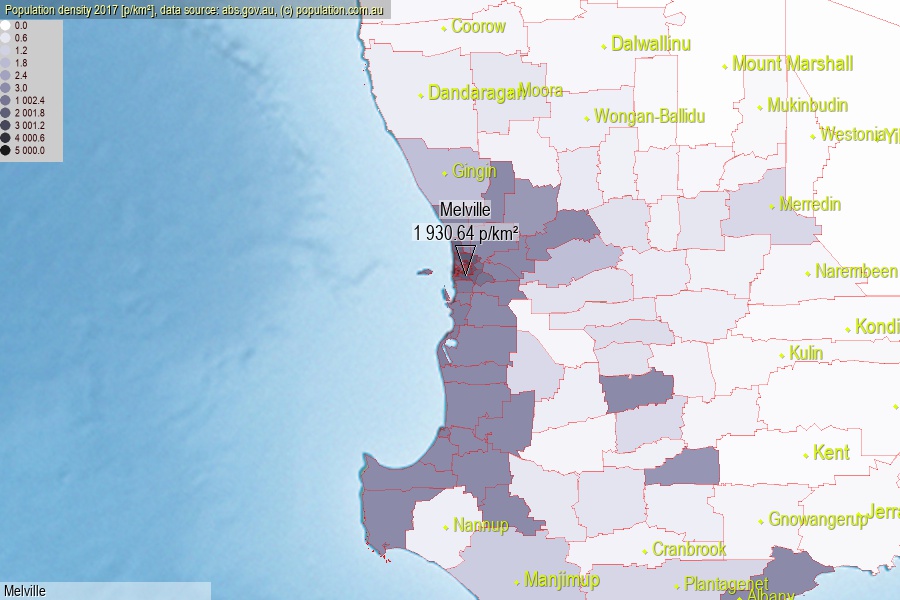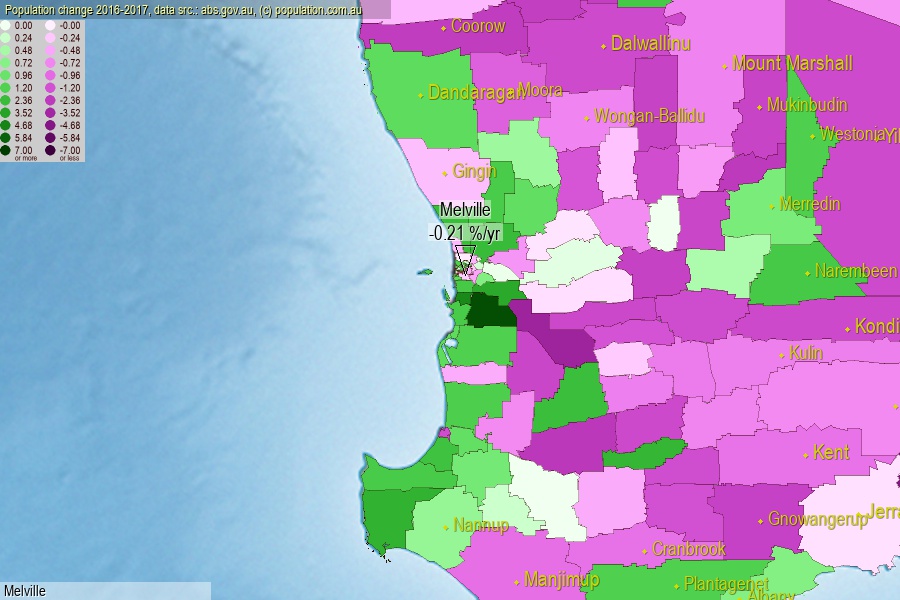 population.com.au
population.com.auLast official estimated population of Melville City (as Local Government Area) was 102 131 people (on 2017-06-30)[2]. This was 0.41% of total Australian population and 3.94% of WA population. Area of Melville is 52.90 km², in this year population density was 1 930.64 p/km² . If population growth rate would be same as in period 2016-2017 (-0.21%/yr), Melville population in 2025 would be 100 459. [0]



Click to enlarge. Melville is located in the center of the images.
Population [people], population density [p./km²] and population change [%/year] [2]
[1996-2001] +0.66 %/Y
[2001-2002] -0.02 %/Y
[2002-2003] -0.19 %/Y
[2003-2004] -0.23 %/Y
[2004-2005] -0.08 %/Y
[2005-2006] +0.08 %/Y
[2006-2007] +1.17 %/Y
[2007-2008] +0.71 %/Y
[2008-2009] +1.29 %/Y
[2009-2010] +0.88 %/Y
[2010-2011] +1.36 %/Y
[2011-2012] +1.40 %/Y
[2012-2013] +0.72 %/Y
[2013-2014] -0.24 %/Y
[2014-2015] -0.53 %/Y
[2015-2016] -1.14 %/Y
[2016-2017] -0.21 %/Y
[0] Calculated with linear interpolation from officially estimated population
[1] Read more about LGA and Australian Statistical Geography Standard (ASGS) on abs.gov.au
[2] Population data from Australian Bureau of Statistics (Population and density: 2017; change: 2016-2017)
[3] Digital Boundaries: Australian Statistical Geography Standard (ASGS) 2016.